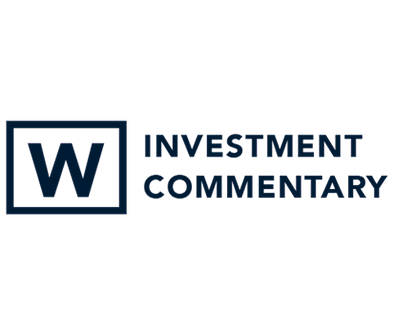Business activity gained momentum throughout the year led by industrial production, housing, and healthy consumer spending. This strong growth, as you are keenly aware, has put strains on the economy leading to a range of issues from labor shortages and supply chain bottlenecks to rising oil/fuel prices. As a result, it seems like the price of almost everything is going up. The effects of rising prices are causing the economy to downshift to a slower than expected growth rate in the final quarter of this year but are nothing that concerns us yet. Despite these challenges the economy remains on solid ground and is likely to continue growing.
We don’t necessarily expect prices to fall, but an extended period of level pricing is a plausible scenario. To help relieve logistical bottlenecks throughout the county, major companies such as Wal-Mart, FedEx and UPS, as well as the Los Angeles Port Authority, have committed to operating 24/7 to unclog the bottlenecks and get products to stores.
Following five consecutive quarters of strong returns, stocks took a breather in the third quarter, finishing effectively flat. The S&P 500 eked out a small 0.2% gain during the quarter, while small cap stocks retreated -4.6%. Small cap stocks have been the strongest gainers over the past year and are usually more volatile than large cap stocks. Investors have been rotating into small companies over the past year, a trend we think could continue.
Considering that stocks have appreciated nearly 27% since September 2020, a pause or even a garden-variety correction would not be unusual. In almost every calendar year since 1928, stocks have routinely pulled back at least 5% to 10%. The median intra-year pullback (drawdown) has been 13% over the past 94 years.
Interest rates ticked up very slightly and bond portfolios were little changed during the quarter. The absolute level of interest rates remains significantly below what a reasonable person would expect them to be in the current environment. With the US inflation rate running 5% year-over-year, a 1.5% ten-year US Treasury yield seems unattractively low. This discrepancy can be interpreted in a couple different ways. Perhaps the bond market is indicating that inflation is temporary, and it foresees flat to moderating prices in the future. Or the bond market may be grossly underpricing the prospect of persistently higher future inflation.
Over the next several months, there will be a lot of attention given to the Federal Reserve and something called “tapering”. We addressed this in our September Par 3 but believe it is important to revisit the subject. The term tapering is used to describe the Federal Reserve’s process of gradually reducing the amount of bonds it purchases each month. The Fed took unprecedented actions to provide liquidity to support the economy during the March 2020 COVID panic. As a result of the sharp economic slowdown, it cut interest rates and began buying Treasury bonds and Government Agency mortgage securities to lower interest rates. The Fed has been buying $120 billion of securities each month, but now that the economy is on a good path the Fed believes the extra stimulus is no longer needed. Beginning sometime this November or December, the Fed will likely begin reducing the amount of new purchases by $10 billion each month until it reaches zero next year. It is important to understand that the Fed is not selling any bonds and plans to continue reinvesting interest and the proceeds from maturing bonds. The Fed is not tightening monetary policy, nor is it attempting to slow the economy or fight inflation. The Fed is not reducing liquidity; it is simply not adding liquidity. In fact, following the end of tapering, the Fed will remain a small net buyer of bonds as it reinvests the interest it receives from the bonds it currently owns. And the Fed currently has no plans to increase short term interest rates for at least a year. We believe the Fed’s policy is sensible and is the correct strategy at this point in the economic cycle.
For many clients, capital gains will be larger this year than in prior years. Following a period of strong stock market returns, some capital gains are inevitable unless you never sell. Rebalancing is a normal and necessary part of portfolio management, along with the need to periodically change some investments. We consider capital gains and tax consequences in almost every trade we make, but we don’t let taxes be the sole consideration. Nobody likes to pay taxes, but they are the result of investment success. We work with many of our clients throughout the year to help them estimate their tax liability. If you are unsure where you stand and would like to us to run a tax estimate for you, please let us know. Your YTD capital gain information is also listed in the back of your quarterly report.
We hope you have a wonderful holiday season and we look forward to writing you again after the new year.


